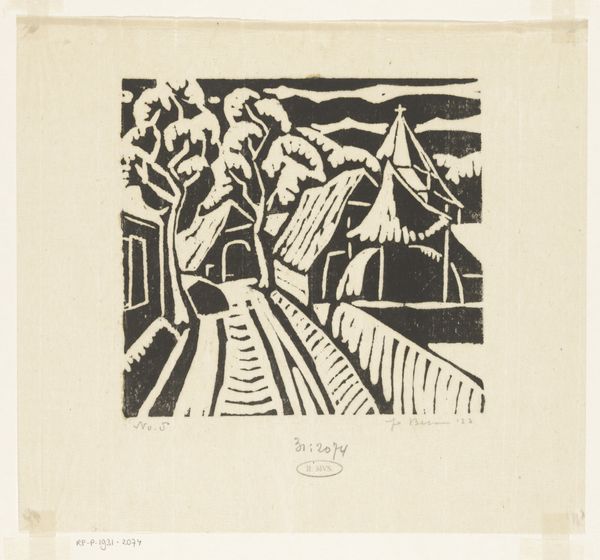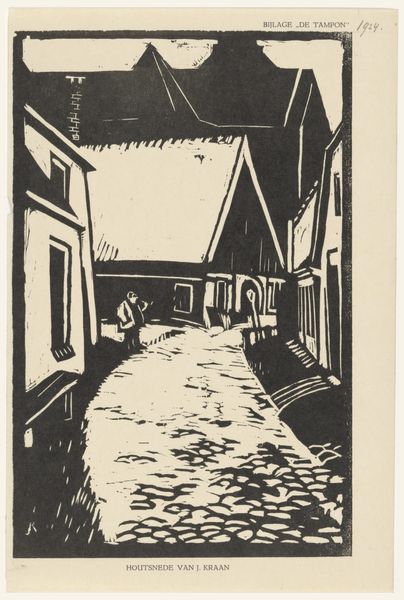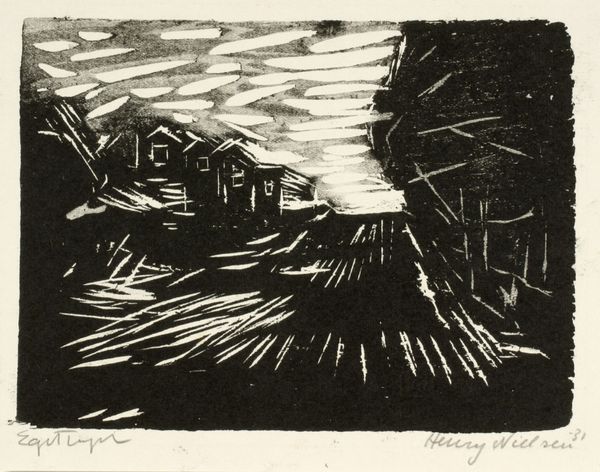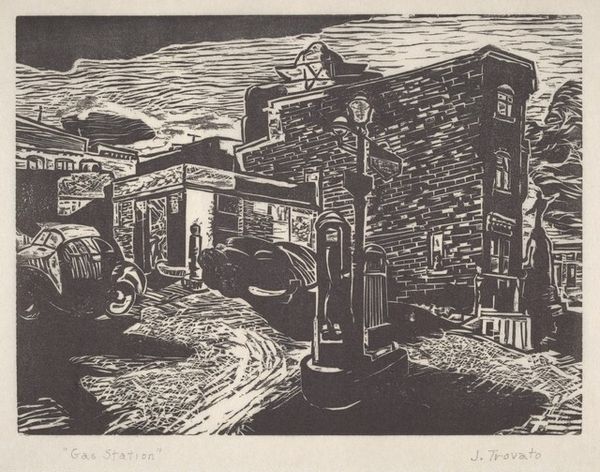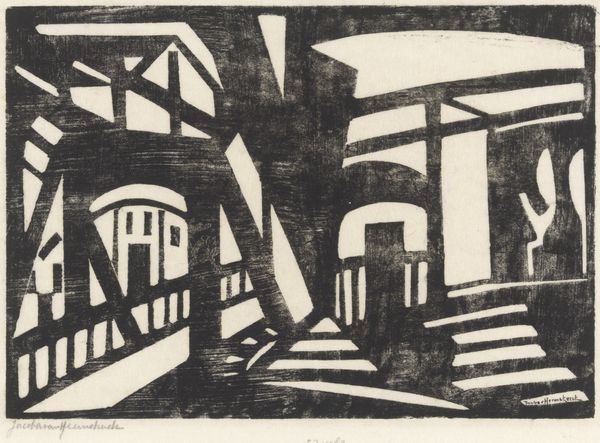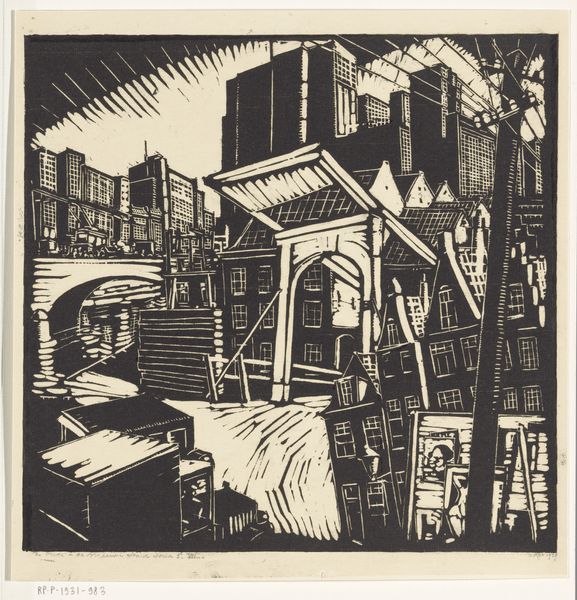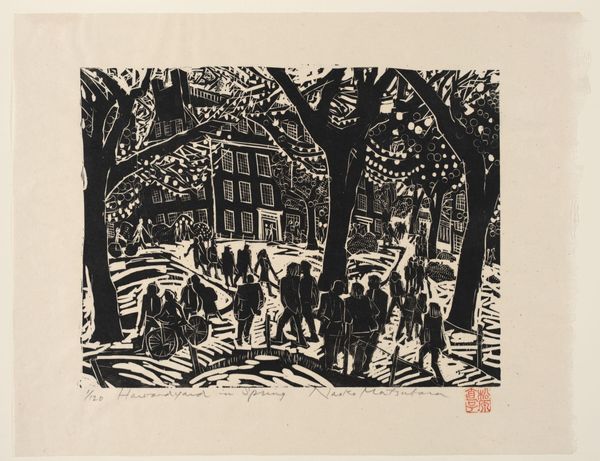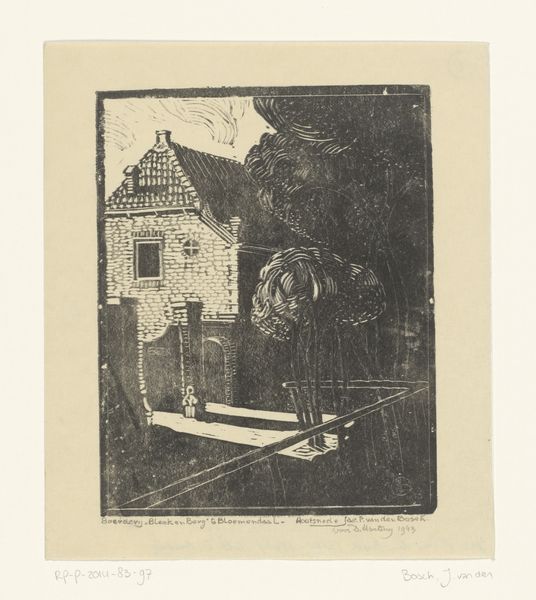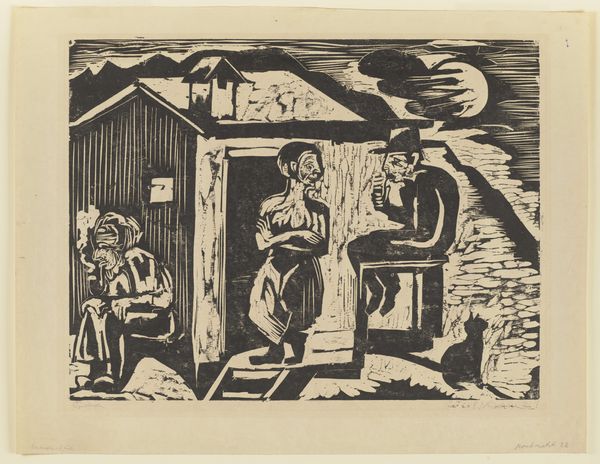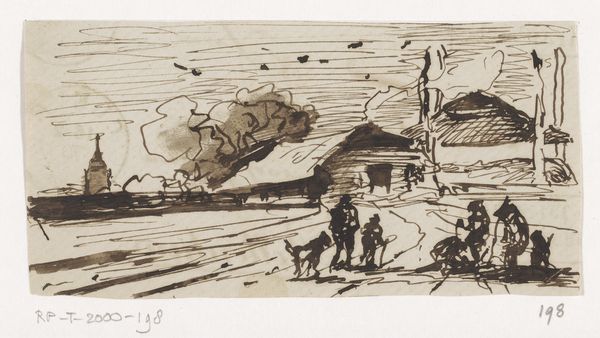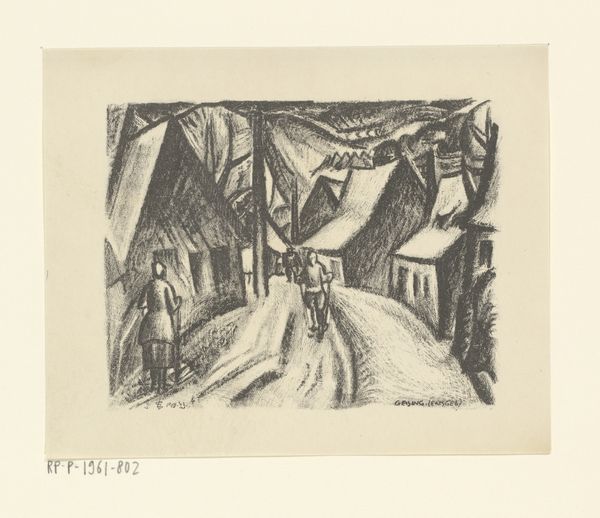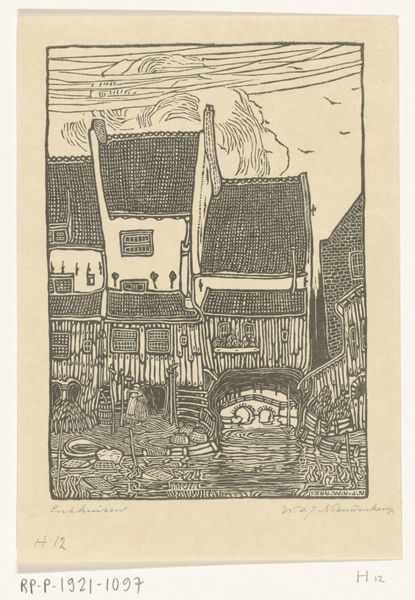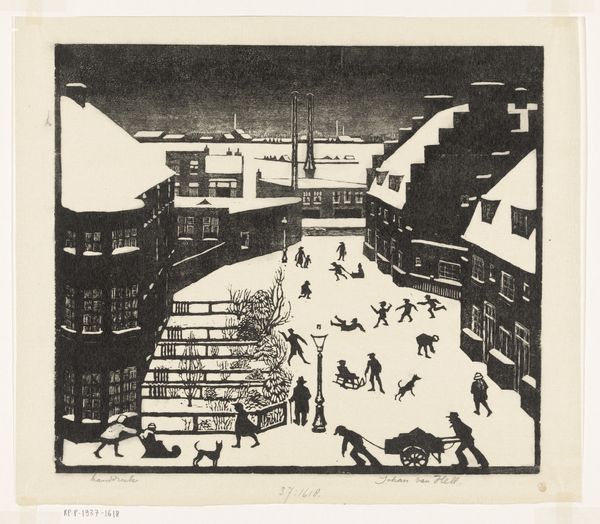
print, linocut, woodcut
#
ink drawing
# print
#
linocut
#
landscape
#
german-expressionism
#
linocut print
#
expressionism
#
woodcut
#
cityscape
#
monochrome
Dimensions: image: 17.8 x 19.6 cm (7 x 7 11/16 in.) sheet: 20.5 x 23.6 cm (8 1/16 x 9 5/16 in.)
Copyright: National Gallery of Art: CC0 1.0
Curator: Here we have Ernst Ludwig Kirchner's "Shed on the Bank of the Elbe," a linocut from 1906. There's something about its starkness that immediately grabs you, doesn't it? Editor: Absolutely. The high contrast, the simplified forms—it feels raw, almost primitive. There's a tension between the industrial elements and the natural world that's immediately palpable. Curator: That rawness, that tension—Kirchner was really wrestling with the changing landscape of Dresden at the time, how industry was reshaping the environment, impacting people's lives. It wasn't always a pretty picture, right? It had grit. Editor: You see it in the bold, almost violent cuts in the linoleum. The buildings aren't just buildings; they're these jagged, looming presences. And look how he renders the sky: slashing strokes that suggest turbulence and unease. Curator: Exactly! It's not just a literal depiction. Kirchner, and the whole Brucke group really, they weren’t just trying to paint what they saw; they were after the feeling of it all. That’s pure Expressionism to me, unfiltered, from the gut. Editor: The composition itself reinforces this. The shed is positioned centrally but somewhat awkwardly, dominating the space without really providing a sense of stability. It’s as if the ground is shifting beneath our feet. It almost looks apocalyptic in its simplification. Curator: And even the choice of linocut, that’s key too. It was seen as a more accessible, almost crude medium, which let Kirchner circumvent those refined artistic tradition norms. This artwork definitely wasn’t about making pretty pictures! Editor: It's a perfect match for the subject matter. The harshness of the medium echoes the harshness of the industrial landscape. The stark black and white reduce the scene to its barest essentials, highlighting the conflicts you mentioned. Curator: Looking at it, you can almost hear the clang of the shipyard, feel the chill wind coming off the river, taste the soot in the air. And honestly? You kind of have to brace yourself, because these guys, they knew how to expose you. They did not turn away from the pain. Editor: Indeed. The 'Shed on the Bank of the Elbe’ captures more than just a scene. It evokes an era of dramatic transformation through powerfully concise formal means, revealing much about the experience of modernity. Thank you for joining me.
Comments
No comments
Be the first to comment and join the conversation on the ultimate creative platform.
